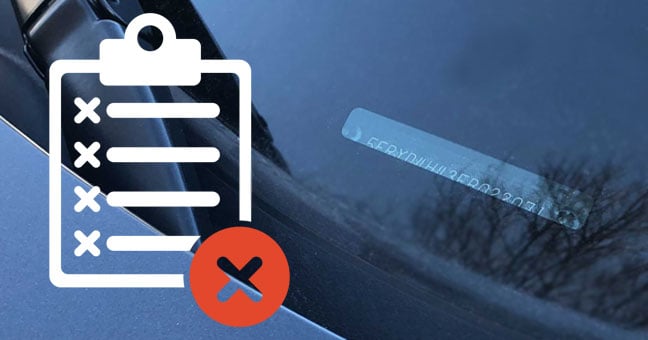

Apr 1 2021
Understanding how VINs work and what vehicle data can be extracted from them is a challenge, even for auto industry professionals who are familiar with VIN data. We thought it would be helpful to put together a list of common misconceptions for anyone looking for a vehicle data solution, as there’s a good chance at least one of these will resonate with you.
Most VIN data solutions will capture a good amount of vehicle details and specifications that are valuable to the fixed ops business, such as engine, transmission, weights/capacities, and maintenance schedules. However, part fitment data is an entirely different data set that is not encoded in the VIN and therefore is not available through VIN decoding. Check out our VIN Data vs. Parts Fitment Data article for more info.
That doesn’t mean that part fitment data isn’t available. Some commercial VIN decoding solutions will offer data mapping to a third-party parts fitment data provider. For example, DataOne maps to The AutoCare Association’s ACES product so that the correct parts will be tied back to the corresponding VIN.
While VINs are unique to each vehicle, much like a human’s fingerprint, and are used in the vehicle registration process to identify the vehicle, registration/license plate data is not encoded in a VIN and is typically not sourced by a VIN data provider. Businesses looking to obtain this data will need to work directly with the RMVs/DMVs.
Like registration/license plate data, vehicle history is not encoded in the VIN, as it is not part of the original VIN assignment at the time of manufacturing. This information can be obtained through a vehicle history provider, such as CarFax or Experian’s AutoCheck, who use VIN data to identify a vehicle and tie the vehicle’s history back to its unique VIN. These vendors work with the RMVs/DMVs who provide a large portion of the data for vehicle history reporting services, including key information such as damage history, lemon titles, flood damage, etc.
Most basic, or free, VIN decoders will offer a fully built-out user interface that can be used by anyone. These services are great for one-off VIN decodes, like those needed for personal use, but they have too many limitations to be a viable commercial option [learn more here]. The majority of vehicle data and VIN decoding business use cases will require something more robust, which in turn requires some technical expertise and data knowledge to integrate this data into their websites/applications.
DataOne prides itself on providing premier support and documentation to simplify the data integration process for developers.
Though several vehicle data points are almost always encoded in a VIN, such as year, make, model, and engine type, there is quite a bit of variability in what information can be obtained from a VIN pattern alone. This is not only true across different vehicle markets (ex., passenger/light-duty, medium and heavy-duty, powersports, etc.) [see infographic], but even across manufacturers within the same vehicle market.
With a comprehensive VIN data solution that offers VIN explosion services and enhanced data, such as DataOne’s, you will generally be able to identify vehicles down to a single style, and in some cases, identify optionally installed equipment and vehicle color when OEM Build Data and/or advanced VIN decoding logic is available.
Learn more about VIN decoding for a single style.
There are different VIN standards worldwide. North America follows the NHTSA standard, which standardized the 17-digit VIN in 1981. Most other regions follow the ISO standard. One concept that seems to trip up many of our prospects is that although certain vehicles may have been manufactured in a region the data provider covers, such as North America or Europe, the vehicle will be badged with a VIN that follows the VIN standards of the market it’s destined to be sold in.
For example, most Fords are manufactured in the US, but Fords destined for sale in Europe will be badged with a VIN that follows the ISO standard. A North American VIN decoding solution, like DataOne’s, follows the NHTSA standard and cannot decode VINs following different VIN standards.
Understanding VIN data is no easy feat. There are a lot of complicated concepts that require some research to fully grasp. Hopefully, clarifying some of these common misconceptions has set you in the right direction.
Is your business looking to work with VIN data and not quite sure how a VIN data solution with improve your products or integrate with your technology? We’d be happy to evaluate your business’s data needs to provide some valuable strategic insights.